Gallery
- Atlanta Terminal Station
- Mobile Terminal
- Birmingham Terminal
- Highlands United Methodist Church
- Greenville County Courthouse
- Fox Theater
- Southern Bell Building
- Edward Lyle House
Philip Thornton Marye (1872-1935), known as P. Thornton Marye, was an American architect with offices in Atlanta, Georgia.
Marye was born in Alexandria, Virginia, and raised at the family mansion, Brompton, outside Fredericksburg, Virginia. He attended Randolph-Macon College and the University of Virginia before serving in the Fourth Virginia Volunteers in Cuba during the Spanish–American War. Marye trained in architecture briefly with Glen Brown in Washington, D.C., and practiced architecture in Newport News, Virginia, in the early 1900s, but moved to Atlanta in 1903 after receiving the important commission to design the Atlanta Terminal Station. The success of the Atlanta Terminal led to him being selected to design the Terminal Station in Birmingham, Alabama. With partners he designed several notable civic, commercial, and domestic buildings in the Atlanta area, including several which are listed in the National Register of Historic Places. He served in the U.S. Army Construction Division and American Expeditionary Forces Transportation Corps in World War I. Marye also was known for his efforts in architectural preservation, and served as a district officer of the Historic American Buildings Survey and as consultant to the American Institute of Architects Commission for the Preservation of Historic Buildings in America. [1] [2] Several of the buildings Marye designed have been listed in the National Register of Historic Places (NRHP).
P. Thornton Marye's partnerships include:
P. Thornton Marye's works include:
Wallace Augustus Rayfield (1874–1941), was an American architect and educator. He was the second formally educated practicing African American architect in the United States.

America's 11 Most Endangered Places or America's 11 Most Endangered Historic Places is a list of places in the United States that the National Trust for Historic Preservation considers the most endangered. It aims to inspire Americans to preserve examples of architectural and cultural heritage that could be "relegated to the dustbins of history" without intervention.
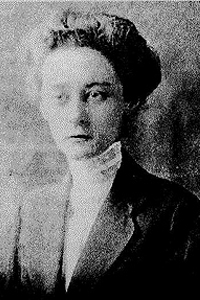
Leila Ross Wilburn (1885–1967) was an early 20th-century architect, one of the first women in Georgia to enter that profession.
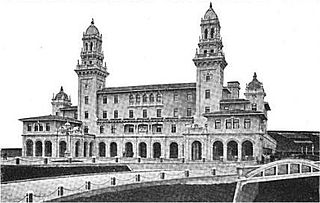
Terminal Station was the larger of two principal train stations in downtown Atlanta, Union Station being the other. Opening in 1905, Terminal Station served Southern Railway, Seaboard Air Line, Central of Georgia, and the Atlanta and West Point. The architect was P. Thornton Marye, whose firm also designed the Fox Theater and Capital City Club in downtown Atlanta, as well as the Birmingham Terminal Station.
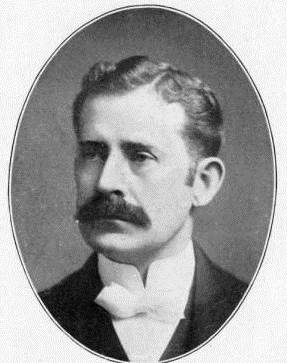
Reuben Harrison Hunt, also known as R. H. Hunt, was an American architect who spent most of his life in Chattanooga, Tennessee. He is considered to have been one of the city's most significant early architects. He also designed major public building projects in other states. He was a principal of the R.H. Hunt and Co. firm.
This is an incomplete list of historic properties and districts at United States colleges and universities that are listed on the National Register of Historic Places (NRHP). This includes National Historic Landmarks (NHLs) and other National Register of Historic Places listings. It includes listings at current and former educational institutions.
William Augustus Edwards, also known as William A. Edwards was an Atlanta-based American architect renowned for the educational buildings, courthouses and other public and private buildings that he designed in Florida, Georgia and his native South Carolina. More than 25 of his works have been listed on the National Register of Historic Places.
U.S. Post Office and Courthouse, or variations such as Federal Courthouse and Post Office or prefixed by Old, may refer to:

The Gulf, Mobile and Ohio Passenger Terminal is a historic train station in Mobile, Alabama, United States. Architect P. Thornton Marye designed the Mission Revival style terminal for the Mobile and Ohio Railroad. It was completed in 1907 at a total cost of $575,000. The Mobile and Ohio merged with the Gulf, Mobile and Northern Railroad in 1940 to form the Gulf, Mobile and Ohio Railroad.

Edmund George Lind was an English-born American architect, active in Baltimore, Atlanta, and the American south.

Frank Pierce Milburn was a prolific American architect of the late 19th and early 20th centuries. His practice was primarily focused on public buildings, particularly courthouses and legislative buildings, although he also designed railroad stations, commercial buildings, schools and residences. Milburn was a native of Bowling Green, Kentucky who practiced as an architect in Louisville from 1884 to 1889; Kenova, West Virginia 1890-1895; Charlotte, North Carolina; Columbia, South Carolina; and Washington, D.C. after 1904. From 1902 Milburn was architect for the Southern Railway.
Terminal Station may refer to:
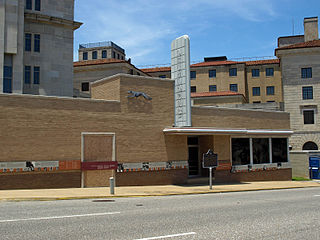
The Freedom Rides Museum is located at 210 South Court Street in Montgomery, Alabama, in the building which was until 1995 the Montgomery Greyhound Bus Station. It was the site of a violent attack on participants in the 1961 Freedom Ride during the Civil Rights Movement. The May 1961 assaults, carried out by a mob of white protesters who confronted the civil rights activists, "shocked the nation and led the Kennedy Administration to side with civil rights protesters for the first time."
Albert Anthony Ten Eyck Brown (1878–1940) was an architect active in Atlanta, Georgia and other areas. Brown was born in Albany, New York. He studied at the New York Academy of Design.

Bruce & Morgan was an American architectural firm based in Atlanta. It was established in 1882 as the partnership of architects Alexander Campbell Bruce (1835-1927) and Thomas Henry Morgan (1857-1940).

Philip Trammell Shutze was an American architect. He became a partner in 1927 of Hentz, Adler & Shutze. He is known for his neo-classical architecture.
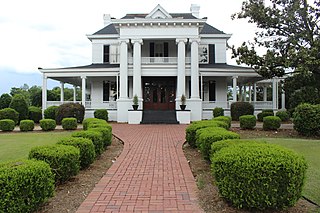
Thomas Firth Lockwood was the name of two architects in the U.S. state of Georgia, the father and son commonly known as T. Firth Lockwood Sr. (1868-1920) and T. Firth Lockwood Jr. (1894-1963). Thomas Firth Lockwood Sr. came with his brother Frank Lockwood (1865-1935) to Columbus, Georgia, from New Jersey to practice architecture.